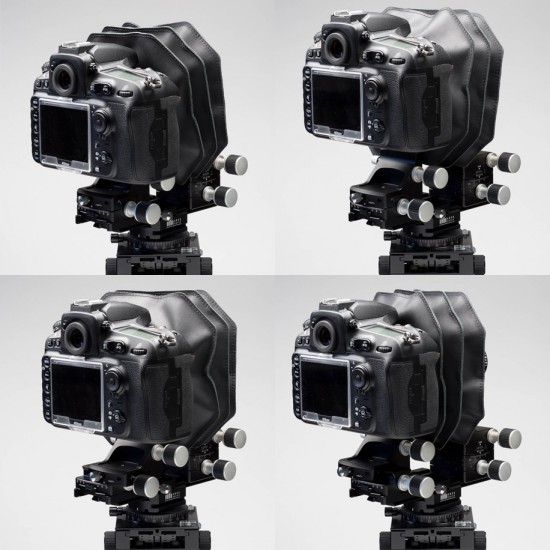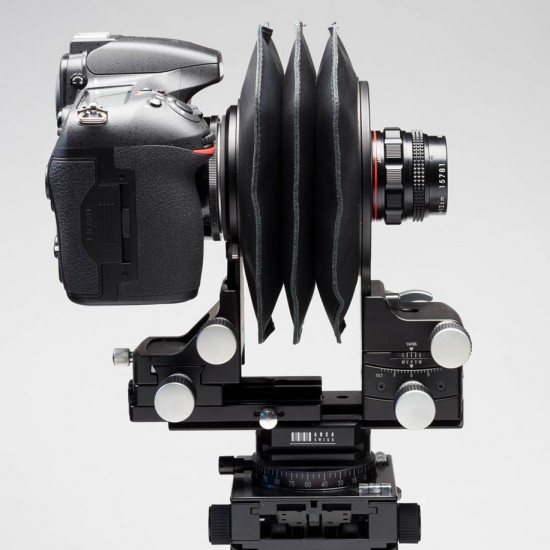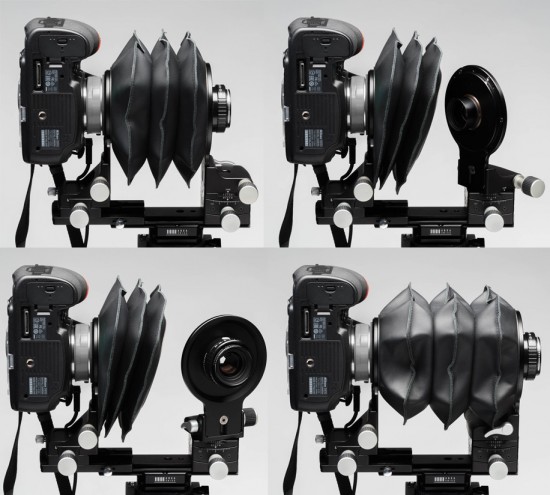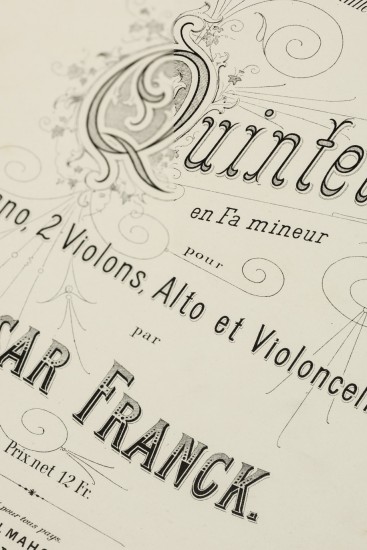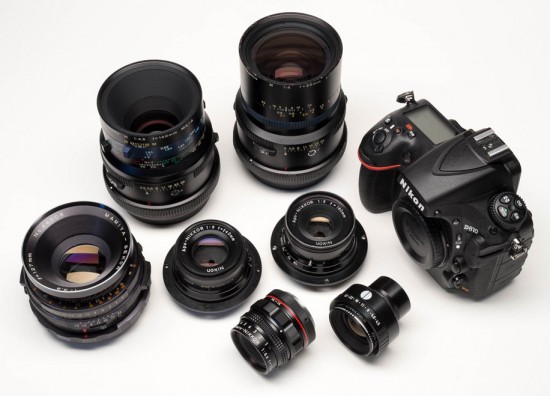
This post is by Laurent Thion who shares his experiences using the Nikon D810 with the new Cambo Actus and medium format lenses (click on images for larger view):
Cambo Actus and Nikon D810: a new great opportunity to use many lenses (and D810) at their best possibilities
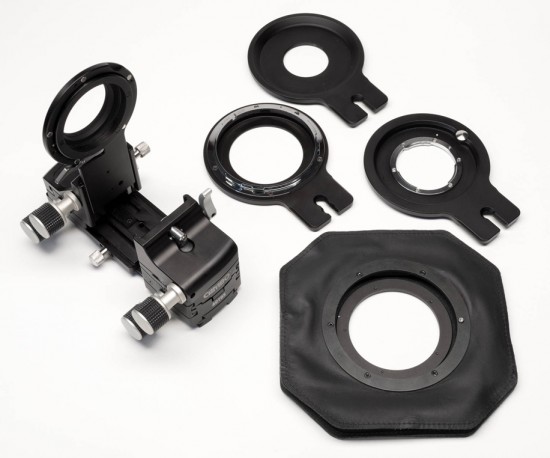
A few years ago, I wrote an article about the CAMBO X2 Pro and Nikon D800 and included some typical photography examples. I’ve just upgraded my set with the new Cambo Actus, the excellent Nikon D810 and some “new” interesting lenses never tested by DxO :-).
New Cambo Actus system
The ACTUS has both similarities and differences with the Pro X2: same concept (lens panel – body with bellows – camera mount) with a great difference. The interchangeable front lens panels, which are available in the following formats: Copal 0, Copal 1 (on request), Hasselblad C Bayonet, M39 Leica thread, Mamiya RZ/RB bayonet, Mamiya 645 Pro bayonet, Leica R Bayonet (for mirrorless bodies only) and the Nikon-F Bayonet (for mirrorless bodies only, can only swing and tilt.
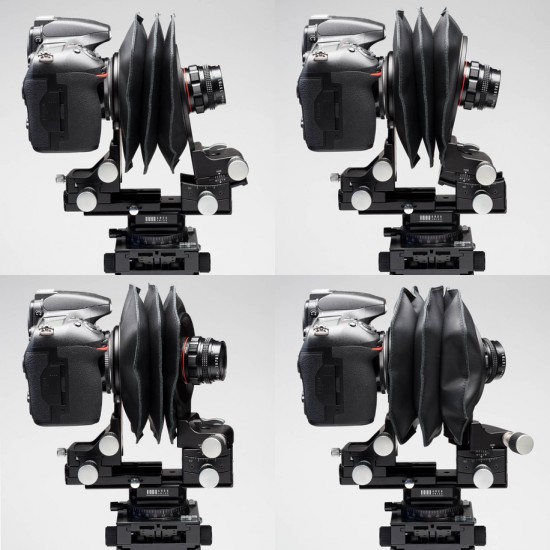
The fixed rear panel is set only for horizontal and vertical shift. An other difference is that the exchangeable bayonets (for Sony E-Mount, Nikon F, Canon EOS, Fuji X-series and Micro 4/3) are fixed with 4 screws on the fixed rear panel and not on the bellows. It’s not possible to change the bayonet very quickly.
How to use it?
On the front, you will find two knobs to adjust tilt (vertical) and swing (horizontal) as well as a locking lever for the lenspanel.
On the middle, the bellows is attached with magnets on both sides.
On the back, all the rear standard is fixed on a fast focus adjustment (with a small locking knob) which supports a fine focus adjustment as well as horizontal and vertical shift adjustment.
The base rail is Arca compatible and can be replaced easily by a long version for macrophotography, which will also require a longer bellows.
What’s it for?
This article is only about using the D810 with the Actus. The D810 has a mirror chamber and the image distance is too long to use a classic Nikkor non-D wide-angle (or any other focal length) with infinity focus. Therefore, it’s impossible to accomplish architectural photography with a wide-angle. But it is possible to use any other mirrorless body to obtain infinity focus with any Nikkor F-mount lenses (non-G because a diaphragm ring on the lens is required). And if you use a mirrorless small capter with a 15mm AIS lens, for example, you can create architecturally correct images as good as an old Sinar F.
With the D810, it’s possible to use a large number of mid-format retrofocus lenses, art graphics lenses and some enlarger lenses (>= 105mm) from infinity to close up.
Some of these lenses can be found at a very low cost. For example, I bought an APO Nikkor 180mm for less than $45. Some EL Nikkor lenses are sold for less than $15!
This point is important: Actus is not really a low-cost system. The price is justified by high quality and precise metal construction. If you have some unused lenses or the time to look for some old, low-cost lenses, you can have a great competitive and versatile system for less than the price of the three tilt & shift Nikkor lenses.
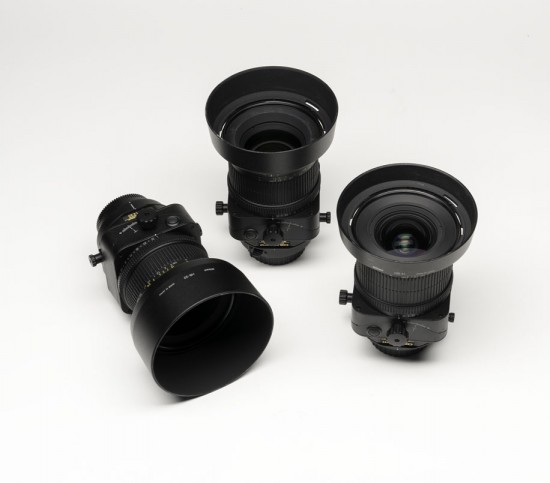
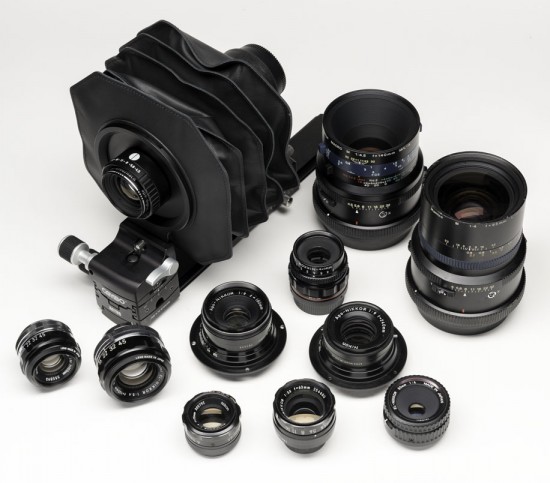
It’s also possible to use some rare lenses like the Macro-Nikkor 1: 6.3 f=12cm (from the Nikon Multiphot system): the unique combination of tilt and shift capabilities of the Actus and the D810 in combination with this incredible lens gives results such as these: sample 1 – sample 2. It’s time for Nikon to release a new contemporary version of theses perfects lenses!
Three tips
1) If you want to use a remote cord or mount and to rotate and easily release the D810, you need to add an extension ring between the body and the Actus. A Nikon PK12 or any other equivalent ring without an internal mechanism can be used. The Nikon D810 should be operated with the mirror up.
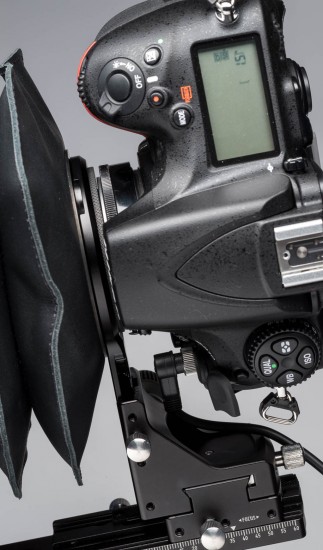
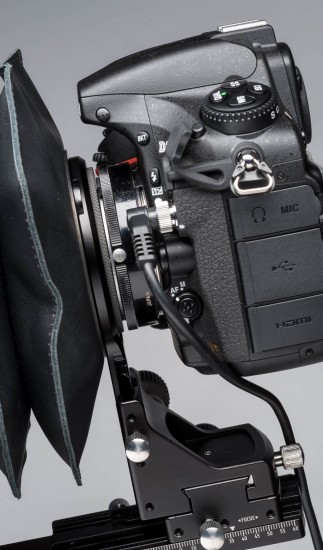
2) DK17M required. For a better tilt adjustment, the best procedure is to use the viewfinder to have a global view of the picture and adjust the focus on different locations. It’s not easy with Liveview because you need to zoom on the screen to evaluate the focus: you never have a global and sharpness view as the same time. For this reason, the magnifying eyepiece DK-17M is recommended to slightly enlarge (1.2x) what is displayed in the viewfinder.
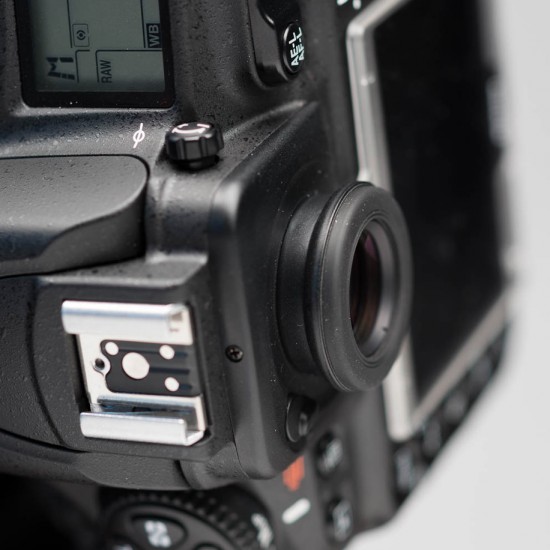
3) If more bellows extension is needed, 45mm can be added by rotating the front element and swinging the lens panel 180°. If tilt or swing adjustment is also needed, the bellows could be released from its magnetic attachments. A longer bellows will be required.
Why tilt and shift?
Many people are confused about the benefit of tilt and shift lenses: remember that even if you can modify an image’s geometry or add some blur with Photoshop, it’s impossible to obtain this result or that of any other image in this article solely with software (on the left, a classical shoot without tilt, on the right, the same picture taken with an Actus using tilt adjustment with the same lens aperture). Also remember that tilt doesn’t increase the depth of field but only changes the position of the focal plane.
One example of shift only possibilities
If you use a lens with a large image circle, you have the potential to shoot three (or more) images with many camera positions. Shift adjustment is only on the rear element of the Actus : the optical axis is not modified and you can assemble pictures without any problem in Photoshop. This example was shot with the APO Nikkor 180mm. This lens has, like the APO Nikkor 240mm, two interesting characteristics: an enormous image circle (>20cm at this reproduction scale) and very simple symmetric optical construction resulting in 0% vignetting and distortion.
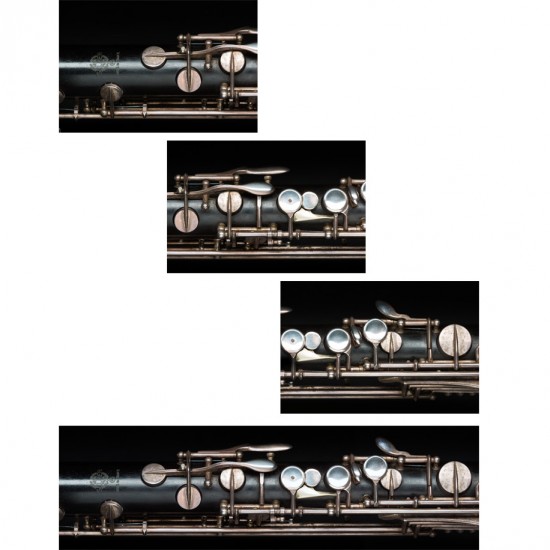
You can see the result in full resolution version here.
Note that the APO Nikkors used for the first image of this article are not usable directly with the Actus. A special lens-panel was made for these two lenses.
Some other samples with Mamiya lenses and fine tilt and shift adjustments
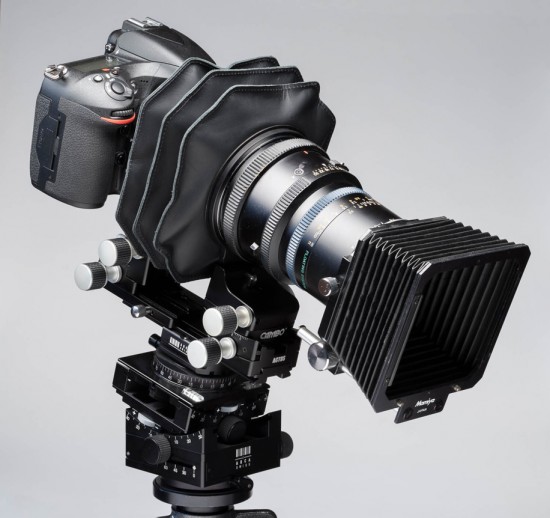
I often use two Mamiya lenses: a 65mm and a 140mm macro. Both are the floating system version and not the simple W series.
This picture was taken with the 65mm and this one with the 140mm.
The Actus is very strong and accepts without any problem theses two heavy lenses without any issues.
To be continued…
Thank to Alain Quintin / MMF and Rene Rook.
Thank to Barbara Sieff for the loan of Jeanloup Sieff’s Leica M3 and Nikon SP.
© Text and photos: Laurent Thion
